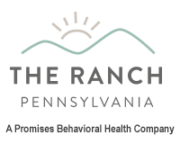Bridging is a street term used to describe the abuse of prescription drugs, not to gain a high, but to minimize withdrawal symptoms between highs. The practice is most common among people suffering from opioid and benzodiazepine addiction. Both families of drugs cause severe withdrawal symptoms.
Opioid and Benzodiazepine Withdrawal Symptoms
If your loved one abuses opioid painkillers, heroin or benzodiazepines, his primary concern is finding enough drugs for his next high. His secondary concern, which can become almost as important as the next high, is the control of withdrawal symptoms. Opioid withdrawal onset occurs as early as six hours after the last high. Benzodiazepine withdrawal can kick in within 24 hours, although withdrawal from long-acting tranquilizers may be delayed up to three weeks after drug cessation. Withdrawal symptoms are extremely unpleasant and can leave the addict unable to function.
Equally important, from the addicted individual’s point of view, withdrawal symptoms attract attention and may alert family members, friends or employers to the addiction. Common withdrawal symptoms for opioid addiction, including heroin, are anxiety, abdominal and muscular cramping, sweating, vomiting, diarrhea and rapid heartbeat. Benzodiazepine withdrawal causes more severe symptoms, including high anxiety, paranoia, rapid heartbeat, muscle cramps, seizures, tremors and sweating.
Bridging the Gap
To minimize withdrawal symptoms until their next high, addicts may use prescription medication to “bridge” the gap. If your loved one suffers from an opioid addiction, for instance, he may try to acquire methadone. Often used to minimize opioid withdrawal in drug intervention programs, methadone is also prescribed for moderate pain management and can be obtained on the street.
Other medication used in legitimate opioid addiction treatment includes the analgesic buprenorphine and a combination of buprenorphine and naloxone. Benzodiazepine addicts favor gabapentin as a bridging agent, an anticonvulsant that also treats anxiety.
Identifying Bridging Prescription Behavior
Identifying bridging behavior can be difficult, as your loved one will take pains to hide any evidence of his or her addiction. A preoccupation with medication may indicate bridging behavior. Opioid addicts often fake pain to gain the prescriptions they need, either for abuse or bridging. Watch for peaks and valleys in your loved one’s mood and physical health.
Do the peaks correspond to any identifiable drug or medication use? Sudden changes in mood, behavior or physical symptoms should always be checked out, even if addiction isn’t suspected. Secrecy and anger about prescriptions may also indicate addictive behavior and the possible need for drug rehab.
Drug Addiction Treatment is the Answer
At The Ranch PA, we can help you with your drug addiction. We have a variety of programs to help you, including:
Inpatient Treatment
Inpatient treatment requires you to stay at a facility for an extended period of time in order to receive care. This type of treatment is often necessary for those who are struggling with addiction and need around-the-clock care in order to recover. Inpatient treatment usually lasts for 30 days, but can be longer or shorter depending on the individual’s needs.
Outpatient Treatment
Outpatient treatment for addiction is a type of care that allows people to live at home and receive treatment during the day. It is less intensive than inpatient treatment, which requires people to stay overnight at a facility. Outpatient treatment can be a good option for people who have milder addictions or who have already gone through inpatient treatment and are now working on maintaining their sobriety.
Outpatient treatment usually consists of group and individual therapy, as well as other activities such as 12-step meetings. Treatment is typically focused on helping people maintain their sobriety and managing any triggers or stressors that could lead to a relapse.
Partial Hospitalization Program
A Partial Hospitalization Program (PHP) is a type of treatment program that provides intensive treatment for addiction while allowing patients to live at home. This type of program is typically used for people who have completed an inpatient detoxification or rehabilitation program and are ready to begin the next phase of their recovery.
PHP programs typically provide treatment during the day, and patients return home in the evening. Treatment typically includes individual therapy, group therapy, and activities such as meditation. PHP programs can last from a few weeks to several months, depending on the needs of the patient.
Dual Diagnosis Treatment
Addiction and mental health disorders often go hand-in-hand. This is what’s known as a dual diagnosis, and it can be difficult to treat both conditions at the same time. That’s why there are specialized treatment programs that focus on helping people with a dual diagnosis.
These programs provide comprehensive care that addresses both addiction and mental health issue. This can be a vital step in recovery. Why? Because it can help to prevent relapse and ensure that the person is able to live a healthy and happy life.
Get Help Today
If you or someone you know needs help, please call us at 717.969.9126. We can help you get the treatment you need to start living a healthy, drug-free life.

